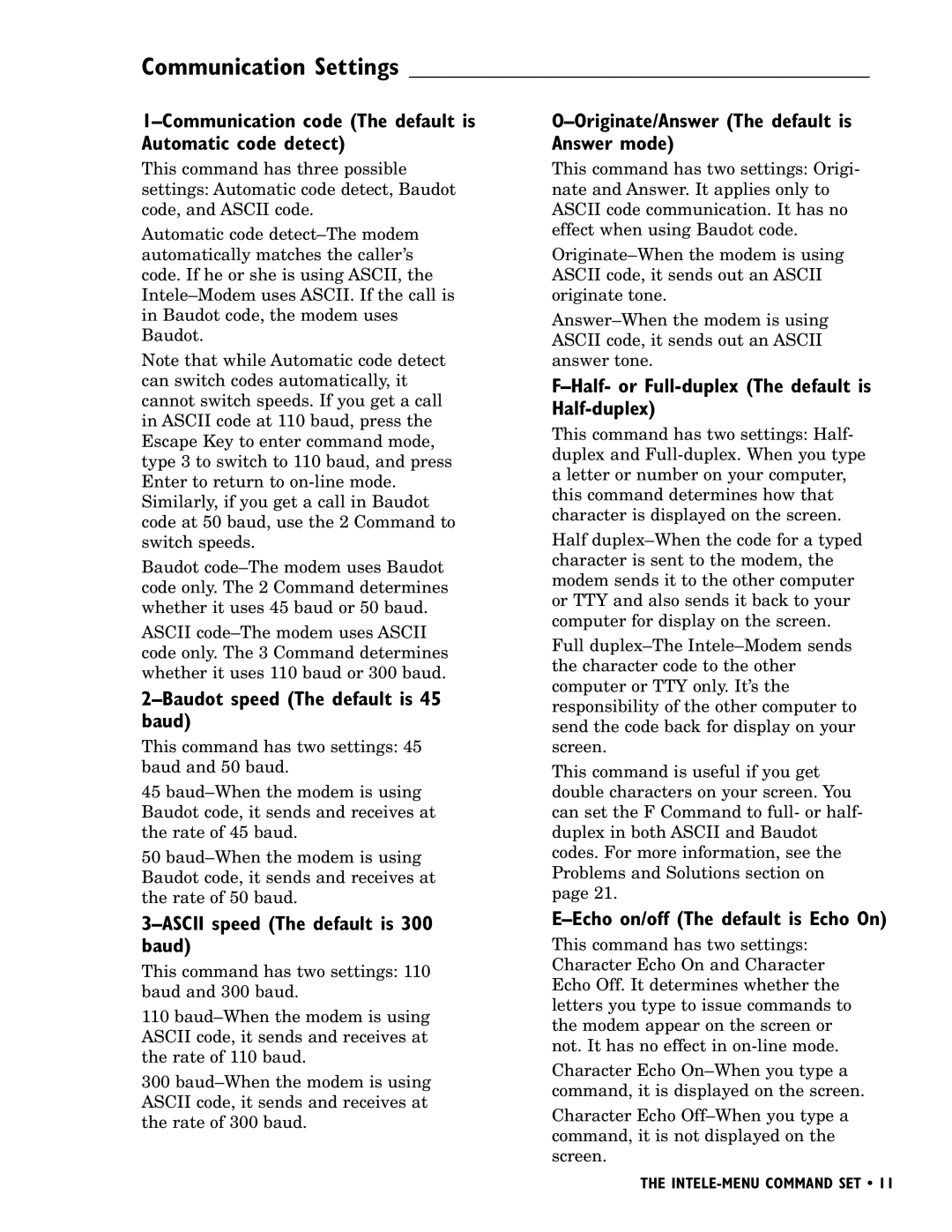Communication Settings _____________________________________
1–Communication code (The default is Automatic code detect)
This command has three possible settings: Automatic code detect, Baudot code, and ASCII code.
Automatic code
Note that while Automatic code detect can switch codes automatically, it cannot switch speeds. If you get a call in ASCII code at 110 baud, press the Escape Key to enter command mode, type 3 to switch to 110 baud, and press Enter to return to
Baudot
ASCII
2–Baudot speed (The default is 45 baud)
This command has two settings: 45 baud and 50 baud.
45
50
O–Originate/Answer (The default is Answer mode)
This command has two settings: Origi- nate and Answer. It applies only to ASCII code communication. It has no effect when using Baudot code.
F–Half- or Full-duplex (The default is Half-duplex)
This command has two settings: Half- duplex and
Half
Full
This command is useful if you get double characters on your screen. You can set the F Command to full- or half- duplex in both ASCII and Baudot codes. For more information, see the Problems and Solutions section on page 21.
3–ASCII speed (The default is 300 baud)
This command has two settings: 110 baud and 300 baud.
110
300
E–Echo on/off (The default is Echo On)
This command has two settings: Character Echo On and Character Echo Off. It determines whether the letters you type to issue commands to the modem appear on the screen or not. It has no effect in
Character Echo
Character Echo
THE
